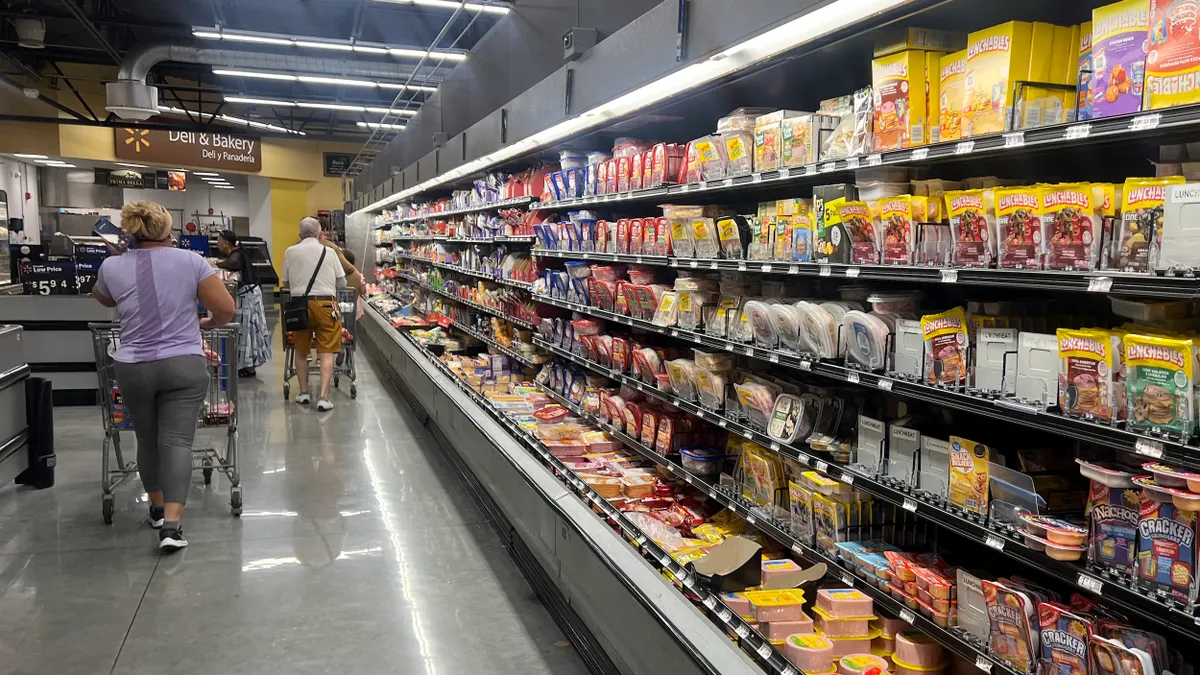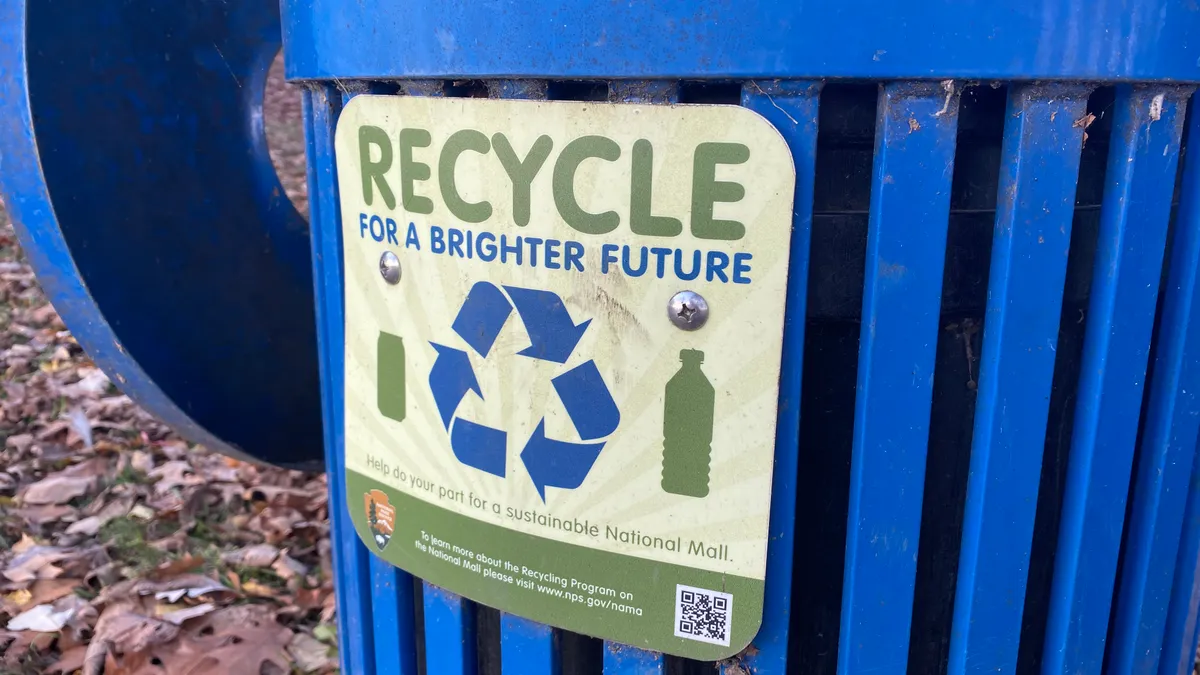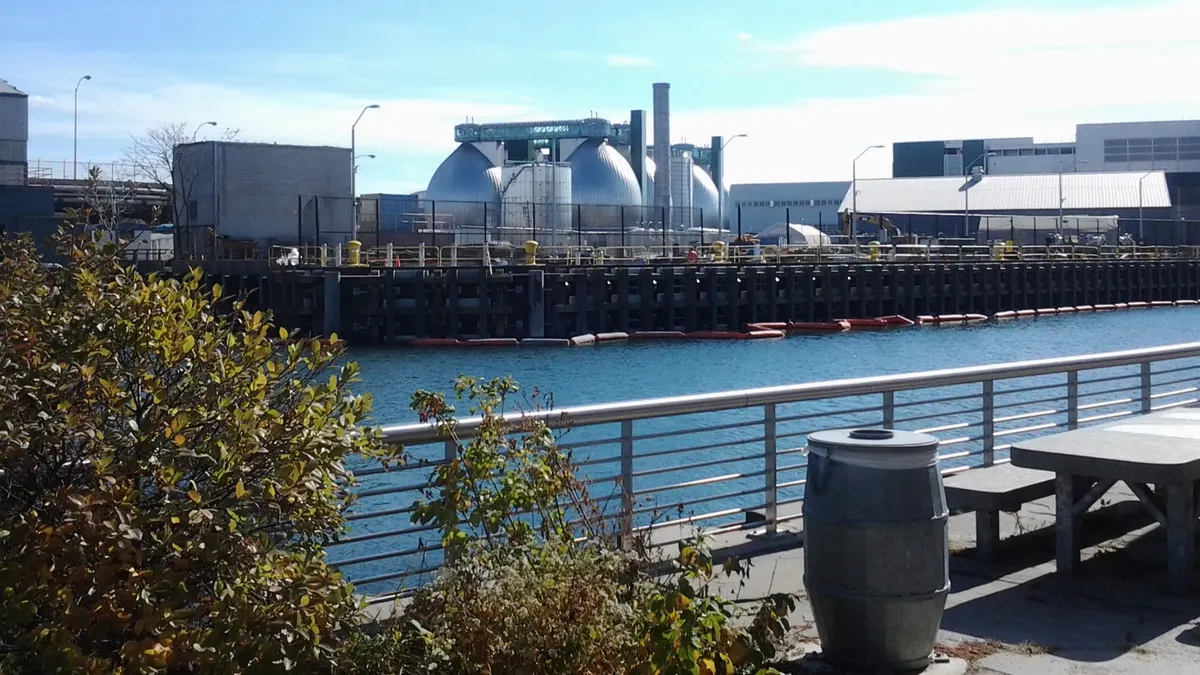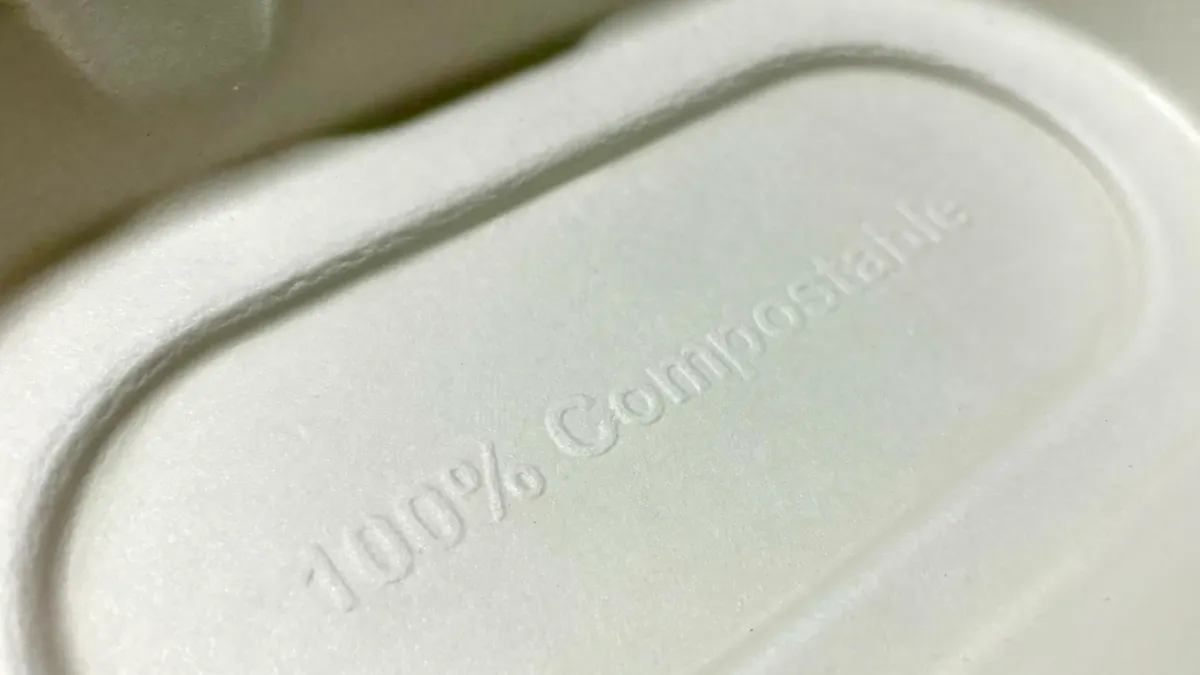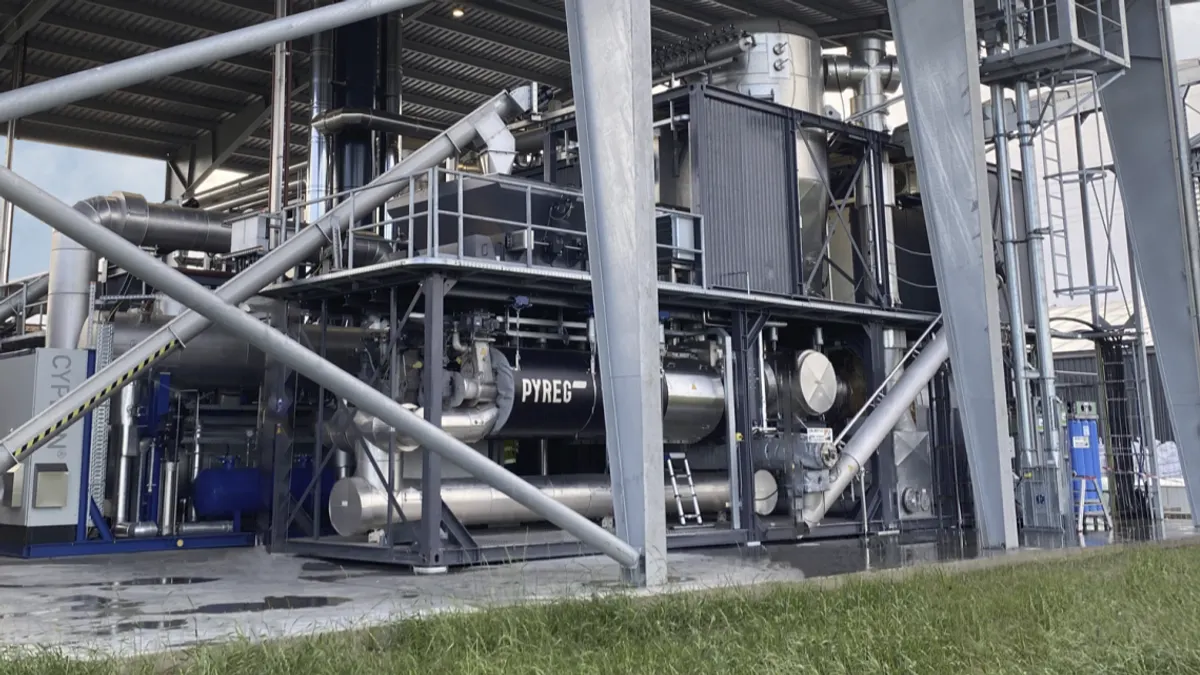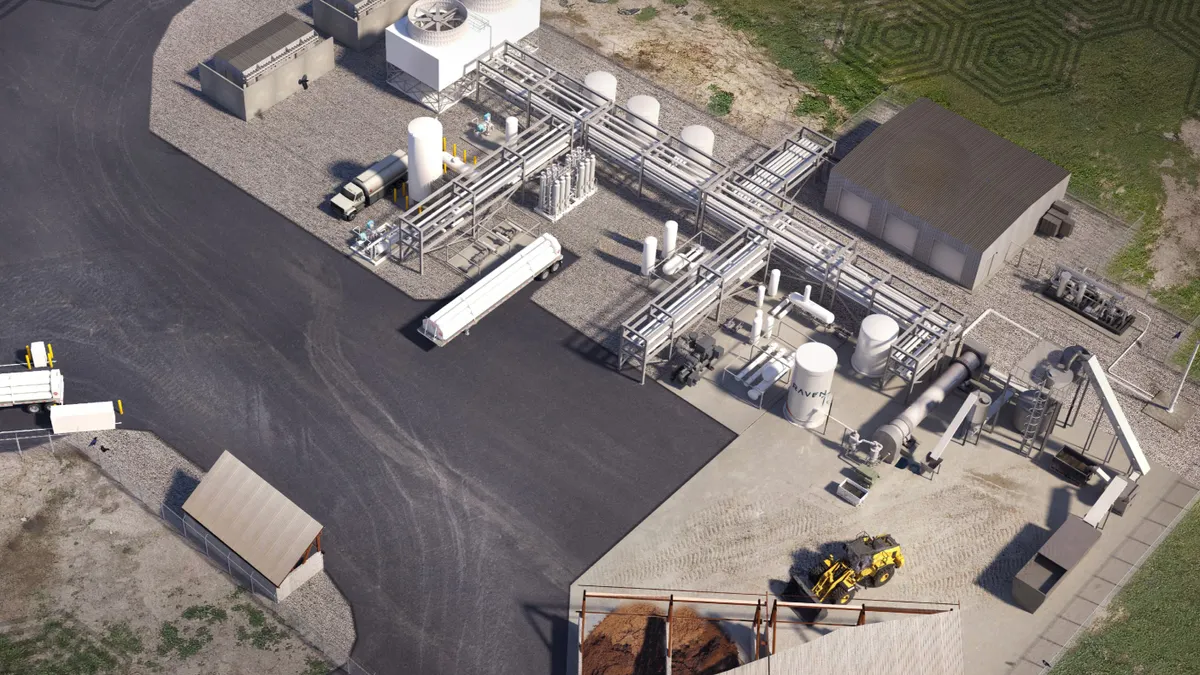Editor's Note: This piece was written by Kyla Fisher, program manager with Ameripen. The opinions represented in this piece are independent of Waste Dive's views.
Waste management is widely accepted as a way to reduce greenhouse gas. Managing discards by putting materials back into reuse through recycling and composting preserves raw materials and reduces impacts caused by extraction, harvesting and processing.
Diversion from landfills further reduces the production of methane generated from decomposition. This premise of diverting waste to minimize environmental impact is a keystone of integrated waste management policy. Yet, despite this premise, landfill-based greenhouse gas continues to rise as the makeup of our landfills shift.
In just 50 years, Americans have doubled the amount of food we waste. Food waste now makes up an estimated one-third of the waste sent to landfills — more than any other material we generate. On a per capita basis, Americans waste almost one third more than peers in developed nations.
Data from the Food and Agriculture Organization of the United Nations (FAO) suggest that if global food waste was measured by greenhouse gas emissions alone, it would trail only China and the United States in terms of overall emissions. Considering that the U.S. is responsible for 30% of the world's waste and generates over 22% of the world's greenhouse emissions, we have a particular responsibility to address our burgeoning affair with food waste.
When we examine current policies around food waste through the lens of the waste management hierarchy, none of these policies tackle prevention — the top strategy for waste management. Rather, a significant emphasis has been placed on redistribution and reuse through anaerobic digestion and composting, and some work on date labeling.
Prevention and packaging
Yet we know that prevention, particularly when it comes to the wasting of food, is the most impactful strategy to reduce greenhouse gas. Prevention of food waste not only saves food from the landfill, but also results in six times greater greenhouse gas emission savings than composting, seven times greater than anaerobic digestion and three times more than that of redistribution.
For this reason, Ameripen argues for the need to integrate packaging and food waste policies to create a holistic strategy in order to drive significant reduction in greenhouse gas emissions. Integrated policies to consider materials management would help simultaneously address the challenges of both solid waste disposal and climate impact.
In a new paper from Ameripen, the association uncovered a correlation between foods with the highest percentage of waste and the least amount of packaging. When the association compared results between developed countries, the correlation between food waste and packaging became even more significant.
The countries with the greatest amount of food waste also sold the least amount of packaged foods. Digging further into this data, Ameripen notes the U.S. has seen a decrease in packaging waste per person since 2000, whereas Europe is seeing a steady rise in packaging waste per person.
But the Ameripen report is not the only study which explored this potential correlation. As part of their work on reducing food waste, the Department of Environmental Quality in Oregon noted: "because of the large amount of resources that go into producing food, efforts to reduce food waste by increasing packaging can sometimes lead to significant reductions in environmental impact, even when the addition of additional packaging is taken into account."
Despite the aforementioned data, this is not an argument to promote the use of more packaging. This is an argument for integrated policy-making. The caution with thinking solely about waste discards rather than materials management is a predominant focus on end-of-life, rather than lifecycle, thinking.
Policies designed to reduce packaging in the waste stream for example, may inadvertently penalize packaging innovations that reduce food waste. Policies promoting recyclability, light-weighting and materials bans, while well-intentioned, may overlook the true value and primary mission of packaging: to protect the food it encloses.
Packaging has been proven in a number of studies to be both an environmentally advantageous and cost effective strategy to reduce consumer food waste, yet we continue to address the management of food waste and packaging as two distinctly separate issues.
Ameripen recognizes that promotion of the value packaging can play in reducing food waste is not a popular notion. Consumers, and subsequently policy makers, tend to perceive that less packaging is better for the environment.
In one global study, consumers ranked recyclable packaging as a more valuable indicator of environmental sustainability than packaging which had been proven effective in reducing food waste. The perception that packaging is an environmental waste has resulted in pressure to avoid or transition away from technologies and designs proven effective in reducing food waste — including smaller sizes — a popular attribute consumers suggest could be effective in helping them reduce household food loss. This type of thinking isolates packaging from its primary role to protect the products it supports.
Integrating packaging as a solution
If we really believe that waste management is an effective means through which to reduce greenhouse gases, then we need to look beyond the landfill and across the lifecycle of materials. Smarter waste management policies need to consider sustainable materials management and acknowledge that packaging and food waste can be a shared solution.
Rather than call for a ban on certain materials, or increased funding for composting or anaerobic digestion, perhaps we should consider alternative collection and recovery technologies for packaging, which permits for more innovative design to target the wastage of food. In order to increase the opportunity for donation and redistribution, we may need to support increased packaging in some food groups or products.
If we truly want to drive environmental outcomes through waste management strategies, we need to consider that packaging and preventing food waste can be complimentary ideas. Policies to manage waste (both food and packaging) need to consider this intersection.




